Have you ever walked into a room full of people, including strangers and people you know, only to feel stuck in your head about how you’re being perceived? It’s a common occurrence and it’s a key indicator of social anxiety. According to the National Institute of Mental Health, an estimated 12 percent of U.S. adults experience social anxiety at some point in their lives. While 12 percent might not seem like a lot of people, keep in mind that that correlates to roughly 40 million people across the country. Suffice to say, you’re not alone. Of course, simply knowing that doesn’t always help. What can, though, is knowing how to cope with social anxiety and having a quiver of tools to do so.
What is social anxiety?
Before diving into how to cope with social anxiety, let’s brush up on what it is, exactly. “Social anxiety is persistent fear or distress experienced during everyday social situations and/or activities where there is a performance expectation (like giving a speech, playing an instrument, or participating in a sport),” explains Ellie Mental Health therapist Arminda Brooks, MSW, LICSW.
Of course, social anxiety can also come into play in situations like parties, dating, and even low-key group hangs. It’s all about how a person experiences the disorder. “Social anxiety disorder is experienced when a person is fearful of the scrutiny, judgment, or evaluation that can come with social interactions,” Real therapist and clinical content manager, Julia Jarrold, LCSW, says. “It can gravely impact a person’s ability to do the things that so many of us take for granted, such as making small talk in line at the store, getting dinner with a group of friends, using a public restroom, asking questions in a classroom or learning setting, and dating. “
When a person experiences social anxiety, it’s all too easy to become consumed by limiting thoughts. With this in mind, Brooks and Jarrold both emphasize the importance of grounding during triggering events.“When anxiety is heightened, I recommend focusing on grounding rather than pushing back on the anxious thoughts,” Brooks explains. “Why? Because arguing with anxiety in the moment tends to give it more immediate power. Instead of fighting anxious internal messaging, I recommend that people give themselves permission to ride the wave. Acknowledge the anxiety, accept it as part of the present moment, and then redirect your focus away from the anxiety.”
Jarrold tacks onto this, noting that whenever you’re feeling overwhelmed by social anxiety, using grounding techniques can bring you out of an anxiety spiral and into the present moment.
7 products to help you cope with social anxiety

Apollo Neuro, Apollo Wearable — $349.00
One way to get grounded during a bout of social anxiety is with the Apollo Wearable. The non-invasive, touch therapy wearable connects to an app to address common stressors, all in an attempt to calm the nervous system. It does so by emitting gentle vibrations in various patterns ranging from five minutes to two hours, all of which can be adjusted in the app. So, if you find yourself starting to get nervous in a social situation, you can simply step away and tune in to your device, which can be worn on your wrist, ankle, chest, or hip.
“Social anxiety can present differently for all of us and it’s really all about finding what feels best for you,” Jarrold admits. “One of the many tips in my toolbelt for social anxiety is to find ways to slow down and give myself breaks when I am socializing.” Her go-to method? A quick bathroom break—even if she doesn’t actually have to go. The Apollo wearable listens to your body and gives you the subtle reminder to do just that.
“Taking the break allows me to have a few slowed moments that can help me to connect to what I am wanting and needing in that setting,” she explains. “Sometimes when I am taking a socialization break, I realize that I actually want to leave the event where I am in attendance, so I leave; [other times] I realize that I am enjoying myself or that I feel like I am over-sharing with someone from a place of nervousness, so then I return to the space with a bit more control than I felt before I took that break.”

Presently, Gold Anxiety Bracelet — $58.00
Arguably a bit more fashionable are Presently’s anxiety bracelets, which double as chic jewelry and act as a small reminder to keep you grounded in anxious situations. Founded by two sisters who both were diagnosed with OCD, the trendy bracelets are designed to help people manage uncomfortable thoughts and feelings as they’re happening. Engraved with affirmations like “brave the uncomfortable” and “it’s okay to feel how I feel”, they’re like having a little cheerleader on your wrist and are dainty enough for everyday wear.
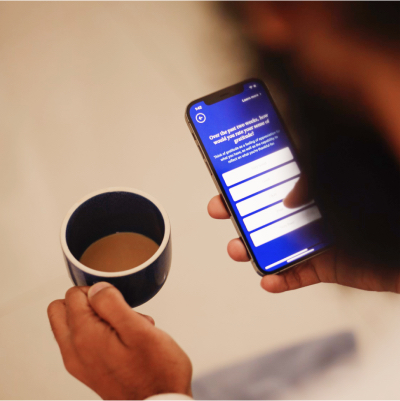
Rea, App Membership — $24.00
Sometimes grounding on your own isn’t enough to catapult yourself out of a social anxiety spiral. Thankfully, apps like Real (which is available on iOS and Android) exist to provide on-demand support. Real is a mental health platform that connects users with therapist-designed and led programs, including grounding techniques, coping tools, and group therapy, to create a sense of calm. With Moments, users can spend five minutes or less tapping into their thoughts and emotions to feel better in their present circumstances. Best of all, this revolutionary mental health service is just $24 per month, making it a fraction of the cost of other therapy solutions.
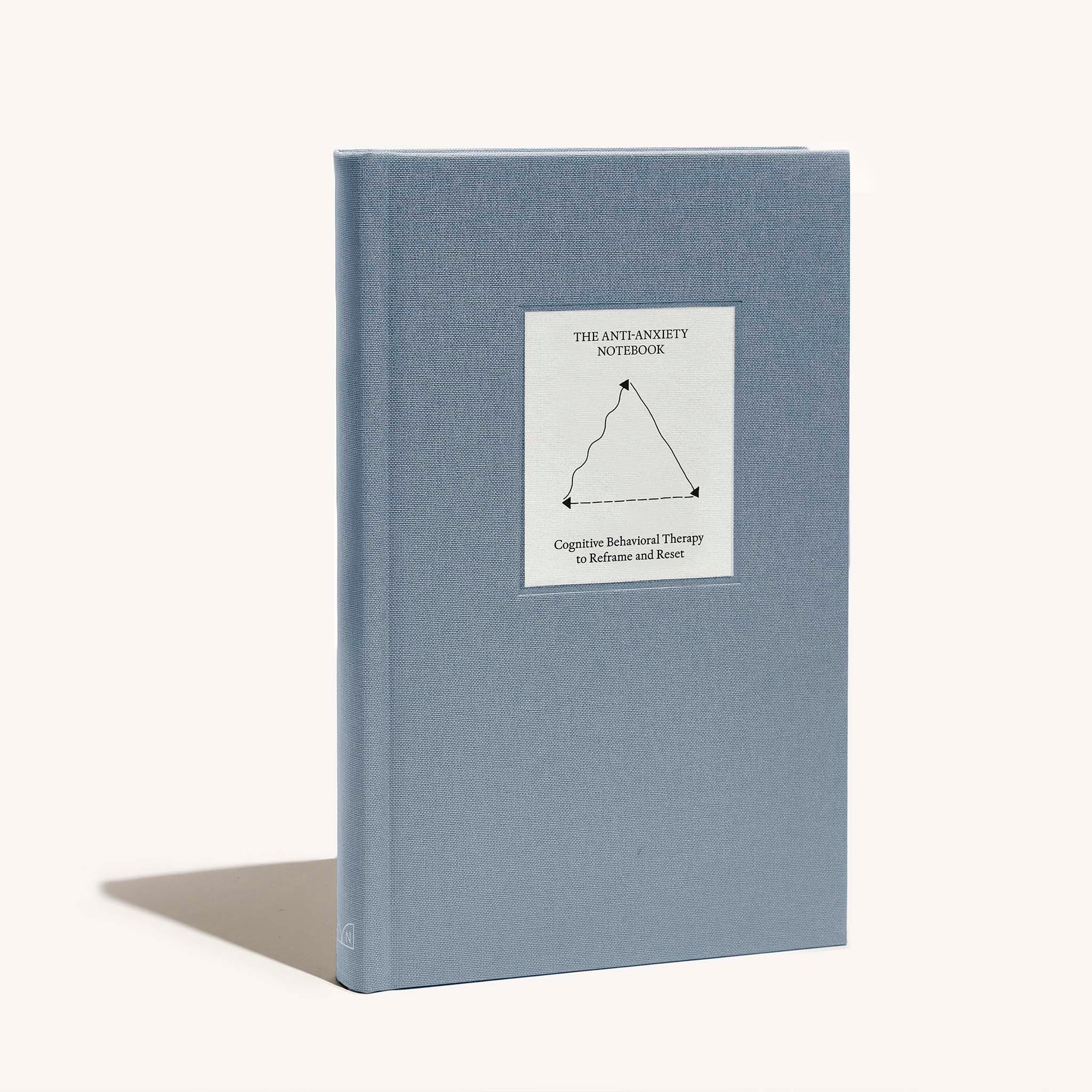
Therapy Notebooks, The Anti-Anxiety Notebook — $38.00
Another great way to cope with social anxiety? Journal about it after the fact. “Journaling can be helpful to increase awareness, but if someone is going to explore the specific circumstances surrounding an increased intensity in anxiety, I recommend waiting until after the fact to journal about it,” Brooks shares. “Once the immediate anxiety level has receded a bit, it can be helpful to ‘talk back’ to the anxiety. This could be viewed as a reality check—exploring the negative thinking patterns that may have taken over during the experience of heightened anxiety (often messages like ‘I can’t do anything right’ or ‘everyone hates me’), and writing out evidence against those thought-traps—maybe describing instances when those negative thoughts did not hold true, or exploring alternative thoughts.”
While any journal can work for such a practice, we’re particularly fond of the Anti-Anxiety Notebook from Therapy Notebooks, which was created by real therapists and is rooted in cognitive behavioral therapy, aka, CBT. It’s effectively a guidebook to pinpointing what triggers anxious thoughts with space to journal through the feelings surrounding them and exercises on how to cope in the future.
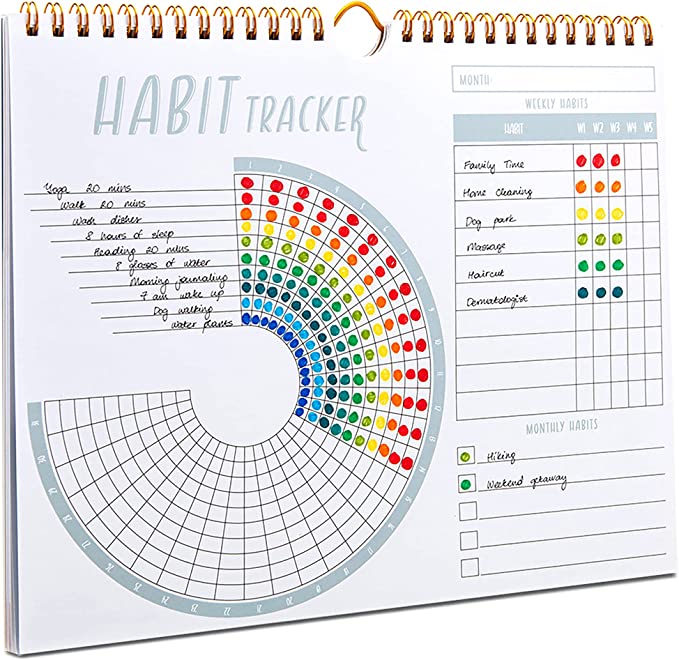
Lamare, Habit Tracker Calendar — $17.00
After you come out of a social anxiety spiral, think about what worked. Additionally, think about what habits help prevent a surge of social anxiety in the first place.“Taking notes on what has worked to support your nervous system and experience of anxiety in the past, whether it is social anxiety or not, can be a valuable starting place,” Jarrols says. “For example, if I know that daily movement helps my anxiety, that may mean that on days where I am expecting to have to socialize and can feel my experience of social anxiety surging, I might prioritize movement. Or if I know that I have a grounding or breath work practice that I rely on when my anxiety presents in panic attacks, it might be helpful to utilize one of those same exercises before, and perhaps even during, a social engagement.”
To keep track of your habits in plain view, hang the Lamare Habit Tracker Calendar on your wall. It has space to track 10 daily habits, 10 weekly habits, and five monthly habits. By making it more visual, you’ll be able to easily assess how you show up for yourself each and every day.
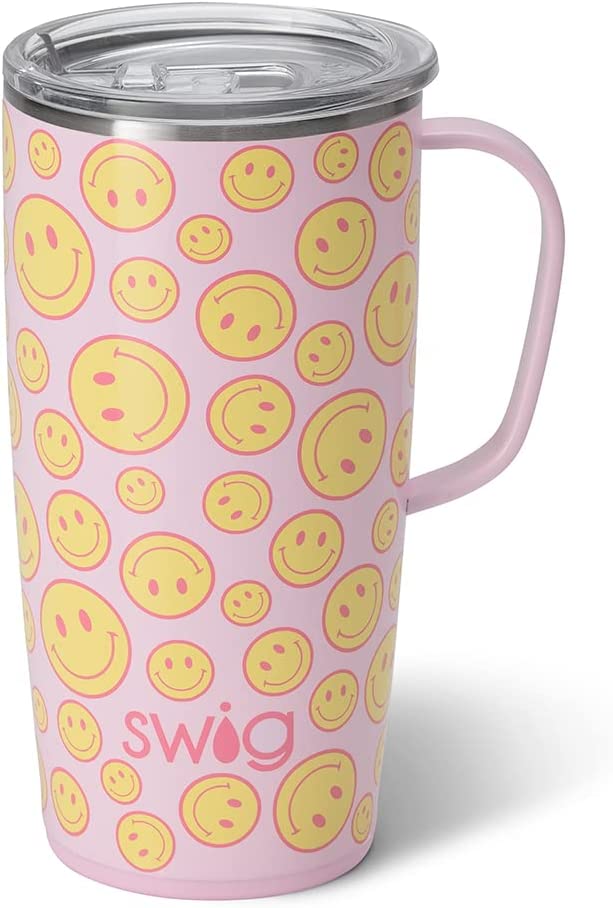
Swig Life, Oh Happy Day 22 oz. Tumbler — $43.00
Expanding on the idea of grounding, Brooks says that tapping into your five senses can be immensely helpful when trying to get through a bout of social anxiety. “Being intentional about checking in with your senses can help with resetting your focus away from the anxiety,” she explains. “Prompting yourself to identify something you can see, something you can hear, something you can touch, something you can smell, and something you can taste can support this mental redirection.”
To ensure you always have something you can refocus on, consider adding a pretty tumbler to your social anxiety toolbox. While it may sound silly, a smooth, colorful, stainless steel tumbler, like the Swig Oh Happy Day Tumbler, will give you something to feel, look at, listen to, and taste. And, depending on what you fill it with, something to smell, too. (Is this an excuse to add another water bottle to your collection? Perhaps. But it never hurts to be more hydrated.)
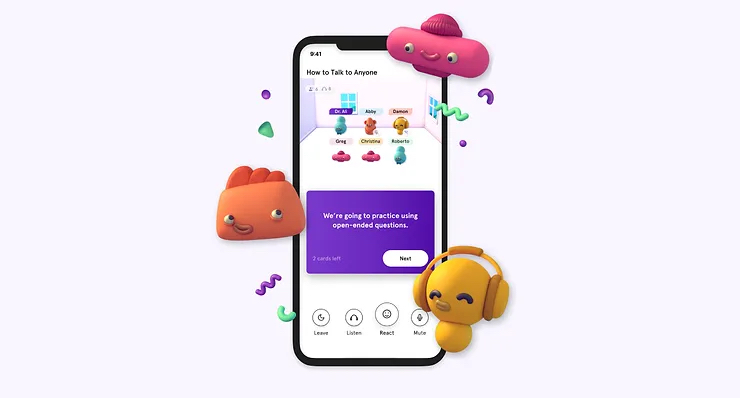
Loop, App Membership — $15.00
Another app that Jarrold recommends is Loop. According to the site, “Loop helps you overcome social anxiety by giving you tools to practice exposure therapy safely, along with the support of a community of mental health professionals and peers.” So, if you find yourself spiraling, you can text with mental health professionals to overcome the situation. In doing so, you’ll learn more about your triggers and what makes you feel safe and supported in such instances.
What’s especially great about the Loop app is that it helps determine the type of social anxiety a user has, if any at all. After all, social anxiety is often confused with shyness.
“It’s important to create a distinction between social anxiety and shyness and social anxiety and being an introvert, because though they can go hand in hand, they are markedly different,” Jarrold says. “Shyness is a personality trait about how we show up socially and interact, while social anxiety is really about that component of fear and discomfort that can come from the potential of judgment.” Meanwhile, being introverted is all about the energy required to interact.
Keep in mind
While these tips, products, and apps can help navigate social anxiety, they’re not a one-size-fits-all solution. “While some people may find the organization of Calm, Headspace, or 10% Happier [all of which provided guided meditation options] to be helpful with grounding, others might respond better to less structured supports; Cosmic Kids Zen Den and GoNoodle are free online sources of mindfulness and meditation videos geared toward kids. These options can be extremely helpful for some individuals,” Brooks says. “Others may find that running, going for walks, painting, playing an instrument, cooking, or reading provides relief.” The point is, there are many, many ways to cope with social anxiety. The most important thing is to find out what works best for you—and to be kind to yourself in the process.
And remember: Having anxiety doesn’t mean you’re broken. “Anxiety is natural and essential for survival; it helps us recognize and avoid threats,” Brooks says. “Sometimes our anxiety-defense-system goes into overdrive and starts interfering with our sense of well-being and with our daily functioning. It can start seeing threats everywhere, and keep us in hyper-alert mode longer than necessary, or in response to non-threatening situations.” That’s when coping strategies come into play. However, if nothing seems to be helping, reaching out to a mental health professional may be your best next step.
Our editors independently select these products. Making a purchase through our links may earn Well+Good a commission.
